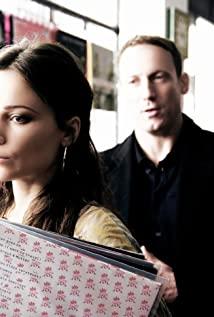My story."
Regarding the movie before:
There has always been a habit, whenever you come into contact with something of interest, you will subconsciously learn about other things related to it. It's like the first touch is a point, then the points are connected to form a line, and finally the line becomes a surface. Apart from this habit, I have always had a lot of movies, books, and music that I haven't read or watched or listened to. All that's left is to know a lot of inexplicable and miscellaneous things.
However, I never get tired of it.
It's like after watching the film, watching the social engineering encyclopedia for another hour, and then there is another book on the way --- "The Art of Anti-Deception".
What is social engineering? Simply put, it is a deceptive method.
Regarding film and social engineering:
There are roughly two things that films always talk about:
First: "Social engineering is positioned at one of the most vulnerable links in the computer information security work chain-people. We often say: the most The safe computer is the one that has been unplugged. However, you can convince someone to plug this vulnerable machine in abnormal working condition and start it."
"No system is safe." , And the most insecure part is people."
From the purest point of view, almost all computer or network vulnerabilities are caused by the subject of people, because this thing itself is created by people. Even if we think of all the possibilities when setting up the rules, it is still impossible to eradicate the loopholes, because the user is a human. If the user gives the wrong command, the computer can only execute the wrong command, which may cause losses. . If the average hacker is a black computer, then the fans of social engineering are the people directly behind the black computer.
"Bobby's task: To implant a Trojan horse on the office computer of the Starbird Shipyard. In the first call, Bobby pretended to be a staff member of the service center, falsely claiming that a network problem occurred, and to obtain the port number of the computer. In the second call, Bobby pretended to be an internal staff member and asked the technical support service provider to block the port number. In the third call, Tom’s request for help fell into Bobby’s trap, and in the fourth call, Tom completely trusted Eddie and was running. Bobby’s Trojan horse program. "This time I was grateful for helping him solve the problem, so Tom agreed to download a software to his computer." This mentality exists for many people, because we can’t question the sincerity of the other party. Help, and relax the trust in the attacker. "
We are not playing with technology, but with people's hearts.
The real example is of course not so simple. Social engineering scams are often based on huge amounts of information collection and comprehensive analysis of the parties. The preparation phase may take more time than the implementation of the scam. This is why, many people complain about the late reversal of the reason is too far-fetched, after all, this is not a planning copy that can be figured out with a single stroke of the forehead. In the film, the protagonist's team looking for clues in the garbage dump is a typical representative of collecting information, but in reality hackers are looking for spam.
Second: All social engineering attacks are based on the cognitive biases that make people's decisions. These deviations are called "human hardware vulnerabilities."
"What you see is just what you want to see."
This sentence can be said to be the pillar theory of the second half of the film, and the whole scam also depends on this theory to unfold.
(The theory is not happy, you can jump)
"The goal is simply guided by us to a specific (note: deliberately arranged) thinking mode that has been set. The goal will think that they can control the situation, and at the same time, they also help you through their power. In fact, there is no conflict between the benefits of the goal and the benefits that he indirectly helps you get. The purpose of social engineering users is to persuade the goal to have a good reason to believe that it only takes a small amount of time. And energy can be "in exchange" for benefits. A better way is for social engineering scholars to give some more sensitive information to the partners. Especially some very realistic audiovisual perception, the target can see or hear you on the spot. It’s more convincing for them than they can just hear your voice over the phone.”
In fact, in some ways, the director and the protagonist’s purpose is the same. The protagonist’s purpose is to mislead the girl with words, expressions, and actions. Police officer, lead her into a pre-designed mode of thinking. Once you enter this mode of thinking, you will find that the original neutral, or non-situational opinions, the information becomes inclined. Just like when a female police officer consults a psychiatrist, her subconscious judgment and subconscious speculation make the information that had no position in her view become inclined. The goal of the director is to use a series of pictures and arrangements of events to introduce us into the same mode of thinking. For example, the "Fight Club" poster in the protagonist's room. For example, the self-righteousness that sees through the end.
"May be inherited" = "will be inherited" = "truth"
Of course, this truth is the truth that the protagonist has arranged for a long time.
Regarding the film: The
film has a strong sense of rhythm. The director always controls the pulse of the whole film. Whether it is the spread of the event, the editing of the shots, or the choice of BGM, it has always maintained this rhythm.
In particular, the "metro space" that concretizes the Internet, and the black web as a dark, crowded, and depressing subway space, is indeed very creative. "Ma Zhongma", imposters, ridicule by giving gifts, a large part of the film's brilliance, all take place in the "metro space". Especially: "What about CLAY?" "CLAY Who?" The fragment of a few seconds, the picture reached the usual few minutes to express the meaning.
Although the structure of swindling is not perfect, it is also a bonus item.
Three questions about the end of the film:
1: Why did the protagonist say at the end "she only found what she wanted to see".
On the one hand, it can be understood that the policewoman has always been trapped in the thinking mode constructed by the protagonist and has not seen the scam at all; on the other hand You can refer to a theory of social engineering: there is no conflict of interest between the liar and the deceived, and it can even be said to be a community of interests in some respects. It's not good for you to see through it, so why should you see through it?
2: Why does the protagonist pretend to be "fine points"?
Weaken oneself through "fine division", stimulate the female police's maternal feelings, and add weight to the final female police's choice. In addition, other members can be directly "virtualized" into people who do not exist in reality, and directly bleached. The most important thing is: don't "fine points" not good-looking.
3: Why does the protagonist's aura change drastically at the end?
Because all the protagonists we have seen before the end of the film are the protagonists who pretend to be "fine" patients, deliberately weakened. He can be cowardly, neurotic, hypocritical, just not normal.
"Who am I? I am Benjamin, and this is my story."
View more about Who Am I reviews











